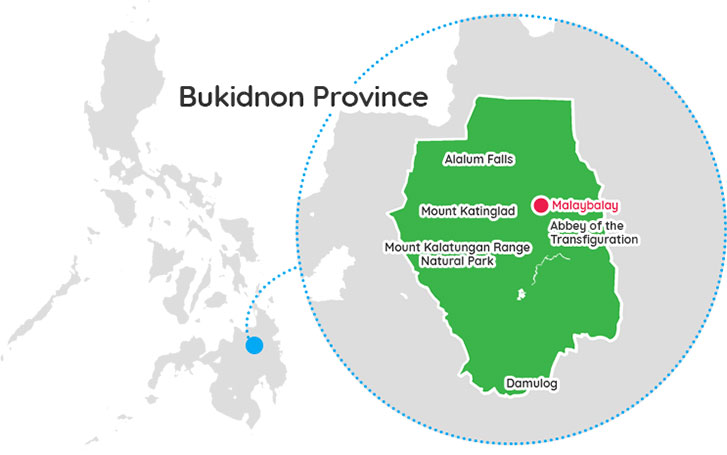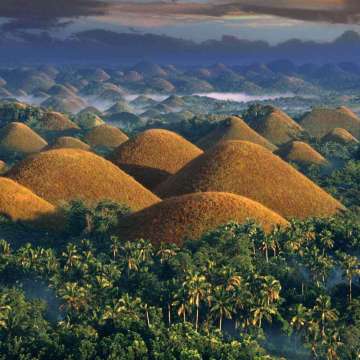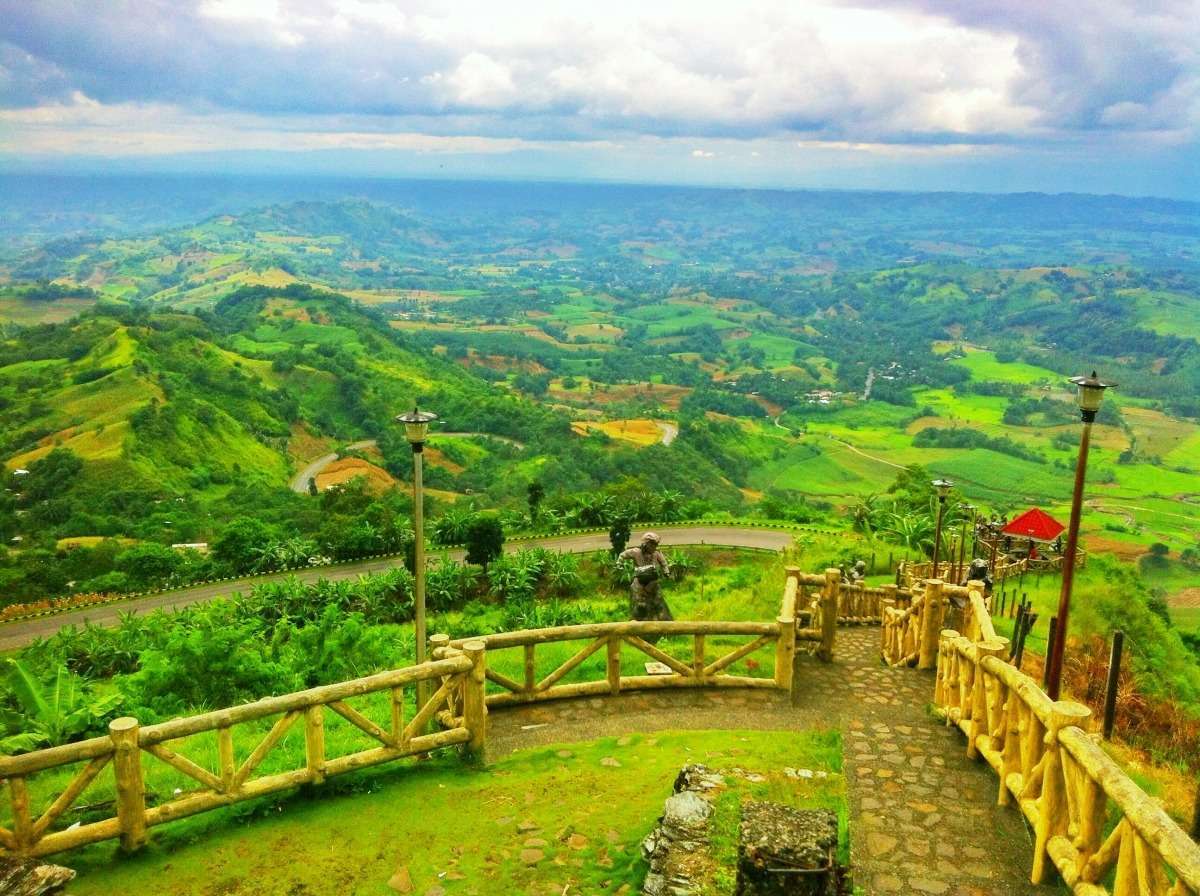About bukidnon

Bukidnon, officially the Province of Bukidnon, is a landlocked province in the Philippines located in the Northern Mindanao region. Its capital is the city of Malaybalay. The province borders, clockwise from the north, Misamis Oriental, Agusan del Sur, Davao del Norte, Cotabato, Lanao del Sur, and Lanao del Norte. According to the 2020 census, the province is inhabited by 1,541,308 residents. The province is composed of 2 component cities and 20 municipalities. It is the third largest province in the country in terms of total area of jurisdiction behind Palawan and Isabela respectively.
The name "Bukidnon" means "highlander" or "mountain dweller." Occupying a wide plateau in the north central part of the island of Mindanao, the province is considered to be the food basket of the region, being the major producer of rice and corn. Products from plantations in the province also include pineapples, bananas and sugarcane.
Situated within Bukidnon is Mount Dulang-dulang, the 2nd highest mountain in the country, with an elevation of 2,938 metres (9,639 ft) located in the Kitanglad Mountain Range. Mount Kitanglad (2,899 m), Mount Kalatungan (2,860 m), Mount Maagnaw (2,742 m), Mount Lumuluyaw (2,612 m), and Mount Tuminungan (2,400 m), the 4th, 5th, 8th, 17th, and 30th highest mountains in the country respectively, are also found in the province.
Bukidnon was consecutively ranked 5th in the list of richest provinces in the Philippines for four straight years according to the Commission on Audit's 2018, 2019, 2020, and 2021 Annual Financial Reports which were posted in 2019, early to late 2021, and 2022, respectively.
History
According to oral history of the indigenous people of Bukidnon, there were four main tribes in Central Mindanao: the Maranaos who dwell in Lanao del Sur, and the Maguindanao, Manobo and Talaandig tribes who respectively inhabit the eastern, southern, and north-central portions of the original province of Cotabato. When the civil government divided central Mindanao into provinces at the turn of the 20th century, the groups included in the province of Bukidnon are the Talaandig and the Manobo, as well as other smaller Lumad tribes. The Visayans, particularly the Cebuanos and the Hiligaynons from the Northern Mindanao coastline and the southern Visayas, migrated into the province. The Visayans are still referred to by the Lumad as the dumagat ("sea people") to distinguish them from the original mountain tribes. This was followed by various groups from Luzon, namely, the Ilocanos, the Igorots and the Ivatans, many of whom were merchants and wealthy entrepreneurs. All contributed massive acculturation among the indigenous tribes. Most of those who moved to the mountains and forest continued to hold on their ancestors' cultural heritage. The wide variety of Filipino groups now thrives in the province and contributed immensely in the socioeconomic development.
Bukidnon became a part of Misamis in the latter part of 1850. The whole area was then called "Malaybalay" and the people were known as Bukidnons (highlanders or mountain dwellers).
The Philippine Commission, then headed by Commissioner Dean C. Worcester, Secretary of Interior, proposed the separation of Bukidnon from Misamis Province. On August 20, 1907, the Philippine Commission Act No. 1693 was enacted the Province of Agusan and sub-province of Bukidnon. Bukidnon became a regular province on March 10, 1917, by virtue of the creation of the Department of Mindanao and Sulu under Act 2711.
Members from bukidnon
Listings in bukidnon
More Provinces

bohol
Bohol, is an island province of the Philippines located in the Central Visayas region, consisting of the island itself and 75 minor surrounding islands. Its capital is Tagbilaran. The province of Bohol is a first-class province and a popular tourist destination with its beaches and resorts. The Chocolate Hills, numerous ...read more

bulacan
At the heart of Fareast Asia lies Bulacan—a province in the Republic of the Philippines, situated in the country's Central Luzon Region, north of Manila, the nation's capital. The name Bulacan was named after the town Bulakan which is derived from the Tagalog word bulak, which means cotton in the ...read more
















